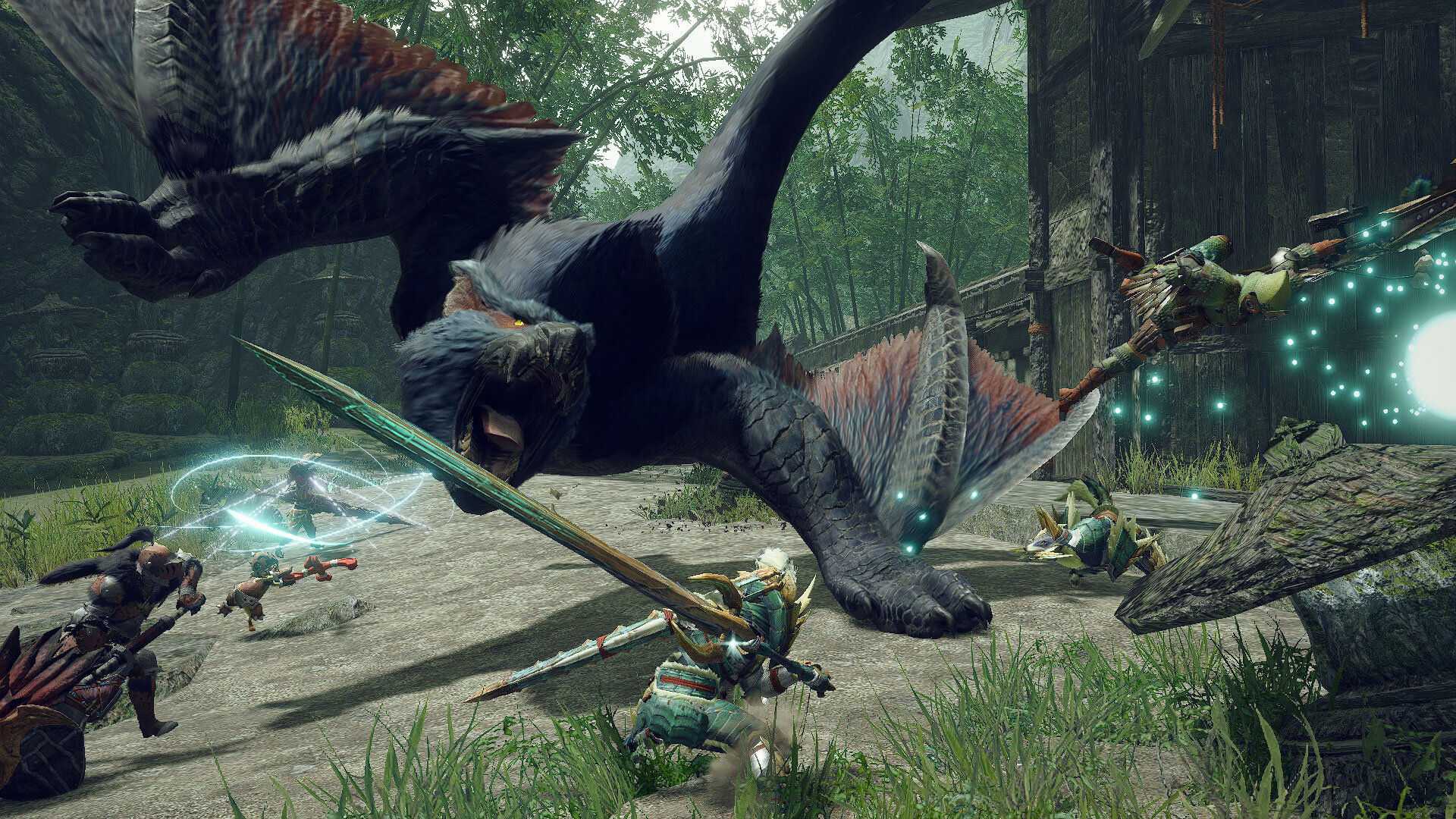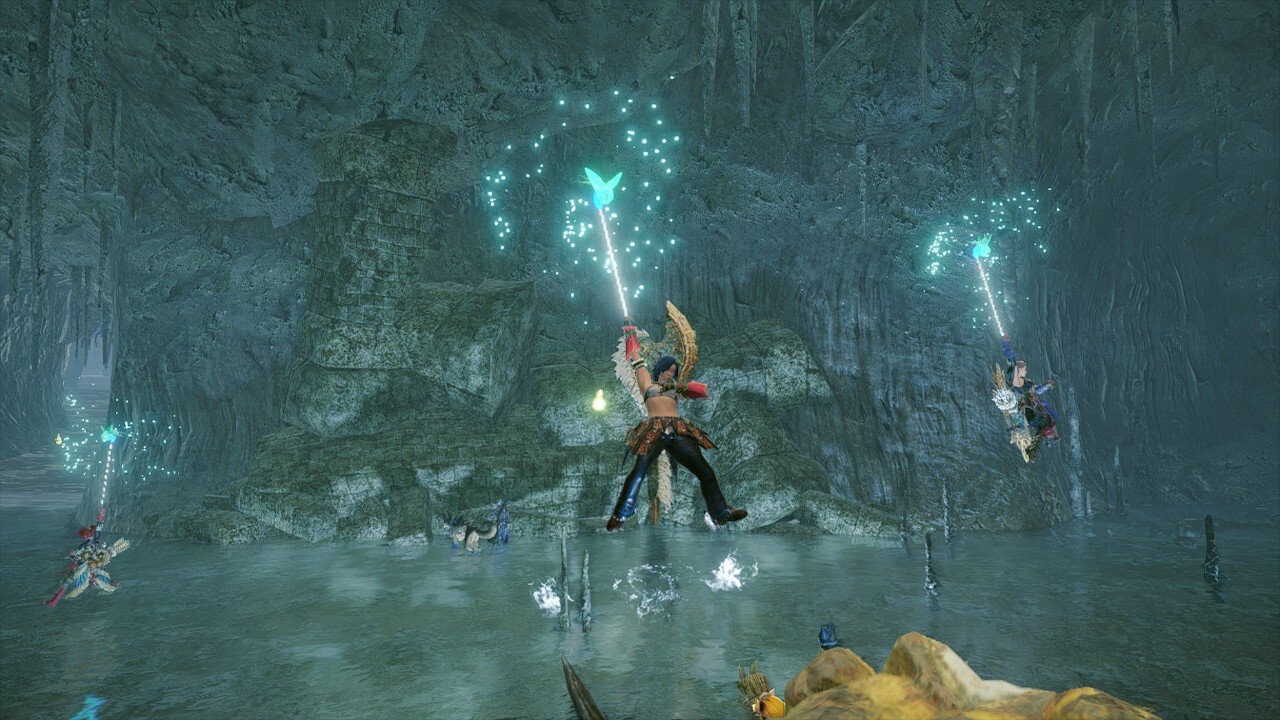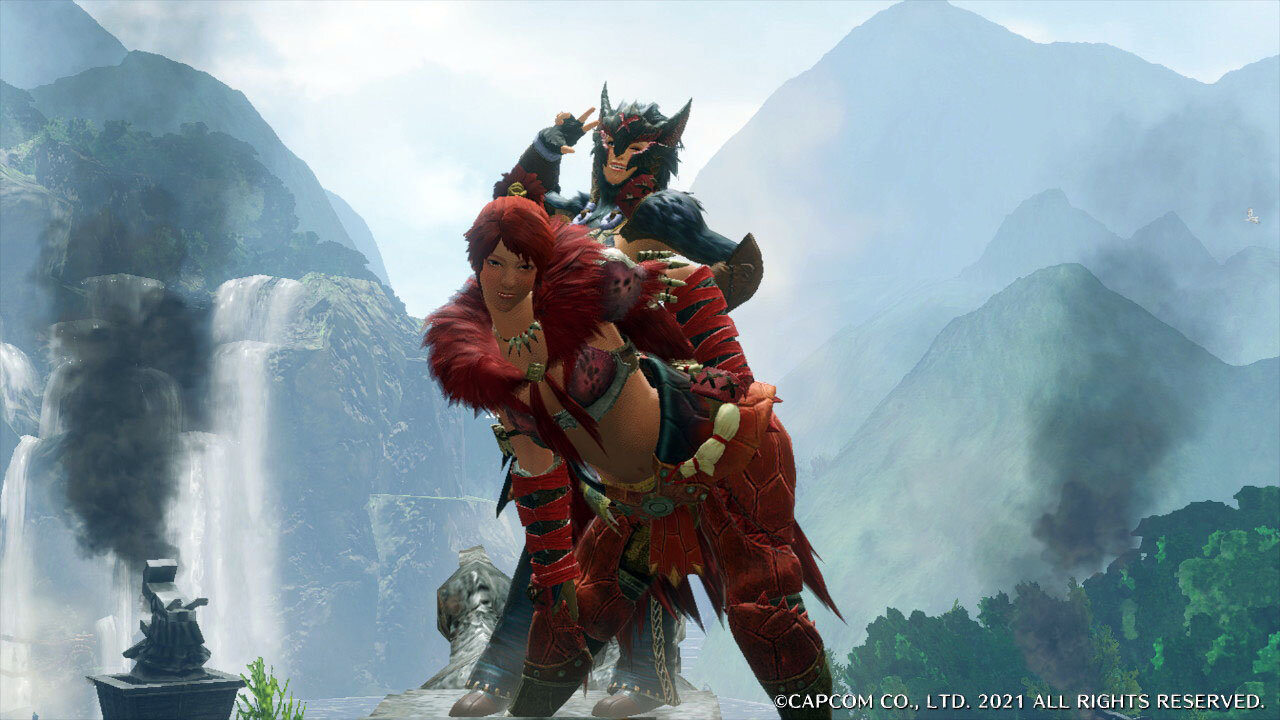Monster Hunter Rise Review - Rising to New Heights with Precision and Polish
/Capcom’s Monster Hunter series has always had a reputation of being notoriously difficult to get into and even harder to master. Despite it being around since 2004 and a slew of spin-offs, it wasn't until 2018’s Monster Hunter World when the series took great leaps in terms of quality-of-life, accessibility, and overall modern game design. After making its debut in the West via PSP’s Monster Hunter, its entries only grew in popularity until World took over both home consoles and PCs. With Monster Hunter Rise being released on the Switch, will we be getting a return to the series’ roots, or a watered down version of World?
While Monster Hunter Rise isn't the first Monster Hunter to hit the Switch, it is the first on the system to not have a 3DS tie-in, opening up gameplay possibilities by not having to match up with an underpowered handheld. It's also the first game in the series following a lot of the changes made in World.
We're thrown into the village of Kamura, a location heavily inspired by Japan. As with most Monster Hunter games, you are a newly appointed hunter tasked with keeping the village safe from land-ravaging monsters. Story has never been the strong suit of the series, but it does get more cinematic with each new entry. Rise takes things a step further by naming all of the NPCs that roam around town, with the memorable ones having more stand-out designs.
Game-Changing Movement Mechanics
New to Rise are the Wirebugs. Native to Kamura, these little critters allow for a bevy of new options. Wirebugs let hunters zip around and into the air, granting mobility almost never seen before in the series. I say almost because grappling tools were present in previous games, but had limited usability. Hunters can now essentially create their own grapple points to sling them in almost any direction they choose. Since zipping around with this new mechanic is a universal input, this alone greatly changes how hunts can progress, since the added mobility bypasses some of the limitations of certain unwieldy weapons.
The fun doesn't stop there. Wirebugs also have additional functionality with weapons. When used in conjunction with a weapon, you get what is called a silkbind move. Normal mobility options are available to you while your weapon is sheathed. While unsheathed, the same wirebug inputs result in different actions based on your currently equipped weapon, be it a new attack, evasive skill, a form of perfect guard, or added perks such as increasing your stats, performing a quick reload, or in some cases, a combination of multiple actions.
Take for example the absurdly-damaging, snail’s-pace greatsword. One of the new silkbind moves granted to the greatsword is the Power Sheathe. By pressing ZL+A while your weapon is out, the move lets your hunter zip horizontally in any direction you choose, and quickly auto-sheathes your weapon in the process. Your hunter's right arm will glow once. When the zip animation ends, you’ve got an increase in attack power for the duration of the glow. While other silkbind moves involve very flash attack finishers, all that extra speed with an otherwise unwieldy weapon was something I never knew I wanted. With regular wirebug moves, you can perform jump attacks at a moment's notice, making for some really epic and clean tail cuts.
Rise also revamps the monster mounting mechanic. If enough mounting damage is dealt, your hunter can wrap the monster with the wirebug silk and rein it in under your control for a limited time. You can then steer the monster into a wall or structure to deal extra damage and cause them to fall over, leaving them open for free damage. Another opportunity to mount a monster can occur during a turf war (when two monsters meet and face off against each other). Usually, the losing monster will be open for mounting. You can then use the mounted monster to attack the other one, and successful attacks will cause the monster to drop those precious parts you're farming. All of this makes mounting a lot more involved than it's ever been and adds a strategic element to it, instead of simply performing the minigame for a guaranteed knockdown. I've been on a few hunts with friends where one of them would excuse themselves to search for another monster, only to have them return riding one to use against our target.
The Rampage
A new tower-defense-like mode is present in Rise. Aptly named The Rampage, waves of monsters try to storm the gates of Kamura village, and it's up to you to set up defensive turrets and traps to keep the monsters at bay.
Manned or unmanned ballistae and cannons can be placed in set locations across the Rampage-specific map. Traps such as bombs or monster bait can also be placed to halt monsters in their tracks as you gun down hordes of monsters either via micromanaging all the turrets or jumping into the fray and slugging it out the old fashioned way. There are also hero units that randomly become accessible as the rampage quest goes on, making those aforementioned memorable villager NPCs even more memorable as you witness their innate power. Rampage was something that I wasn't too keen about at first, but it's definitely its own bout of fun, especially when played with others.
A Near-Flawless Online Experience
Online play has been magical. I don't think I've played an online game as smooth as this in a long time. The most lag I've experienced is having trouble grabbing an item from the item box and seeing monsters freeze in the air mid-attack for a second. For 98% of the time, it's been a near flawless experience. The good vibes online aren't limited to the hunt itself. Creating and joining lobbies is incredibly fast, and conveniently made to be accessible in the starting area by simply speaking to the mailman palico in the center of town.
There’s no more having to run off to a different area, going through multiple loading screens and praying that no one runs into connection issues. Every menu for both online and offline options works well and is basically within arm's reach. No muss. No fuss. If a disconnection does occur during a hunt, getting back is as easy as returning to the lobby session and rejoining the quest.
Ease of Access with Peak Performance
Accessibility in video games can be a divisive subject. A lot of people want games to have a relatively easy barrier to entry, but still retain enough challenge and depth for the hardcore to appreciate. When it comes to the Monster Hunter series, Rise might be the easiest one to jump into for new players without alienating their original audience. Progression has been separated once more to Village Quests for your single player missions and Gathering Hub Quests for either solo or online play, with hub quests being a tad more difficult to initially take on alone.
Players are free to progress in either leg of quest lines without any prerequisites. No need to do X village quests before being able to play online with your friends and whatnot. There's also a neat little feature when it comes to these quests that respects your time: instead of having to essentially replay Low Rank village quests again in the gathering hub, special license tests will appear in your quest list.
Completing enough village quests will unlock said special license tests, boost your hunter rank in the gathering hub, and eventually unlock the 3-star urgent quest, which, once complete, will bring you to High Rank. If you do end up tackling the hub quests first and reach High Rank that way, the special license tests will disappear, since at that point they are essentially moot. It’s a neat little feature.
Performance-wise this game runs like a dream. Rise runs locked at a consistent 30fps with the rare drop to as low as 25fps in a few instances when there's a crazy amount of hit effects, sparks, and flashes happening on screen all at the same time. Load times are also pretty darn fast which is notable given that this is running on a Nintendo Switch. Also, take into account that hunters can bring at least one palico or palamute along with them in multiplayer, making for a total of eight beings roaming around a map where up to 3 large monsters can be active all at once. Whatever Capcom is doing with their new RE Engine, they're doing something right.
While the feeling of scale in Monster Hunter Rise isn't as large as World, it wasn't something I immediately noticed until I took a look back. Rise isn’t as visually stunning and is currently a smaller overall package. But the core gameplay is so similar that I'm just happy to be playing a new entry in the series. It's an incredible game that I can easily recommend to hunters both new and old.
10/10
Highlights
(+) Low Rank is relatively easy while High Rank is still tough as nails
(+) The Hunter's Notes is a very welcome addition
(+) Feature-rich training mode complete with a programmable training dummy
(-) No option to auto-load into the Gathering Hub when booting the game
(-) The final elder dragon fight was more of a spectacle than a challenge
What I’ve Played
Over 95 hours of gameplay
Can confidently solo hunt High Rank Zinogres and Rajangs
Hunted a total of 263 large monsters
[This review is based on a Nintendo Switch review code provided by Capcom.]





















Death Stranding 2: On the Beach delivers higher visual fidelity, consistent performance across the board, and a few new tricks that make gameplay more accessible, challenging, and fun. If you have the patience and come in with an open mind, you’ll be in an exclusive group of people who will struggle to describe this experience to anyone else.